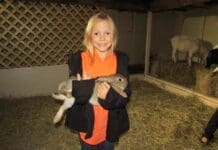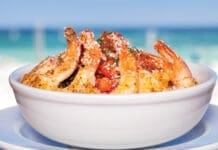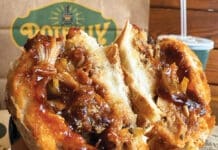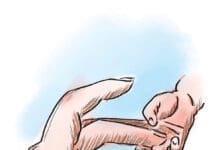By Helen Petre
Welcome to fall! It is time for us humans to break out the blankets and jackets, but what do our wild animals do to prepare? Fortunately, they have everything they need to stay warm. In the fall, most animals start eating a lot. They need to add a layer of fat to keep them warm and provide energy to sustain them through the winter when there is little food.
The Florida black bear, Ursus americanus floridanus
The Florida black bear is the only bear in Florida. There are about 4,000 in all of Florida, but only about 120 in the western Panhandle, mostly in Eglin. They prefer dense undergrowth in scrub oak ecosystems, swamps, and flatwoods. One was seen in Grayton Beach State Park recently, and it was not small. Should we be worried about large, dangerous animals while walking in the woods or on the beach? Probably not. As with all wildlife you encounter in their habitats, give them room and do not try to interact with them. If you are hiking in an area that is bear habitat, make noise. If the bear hears you, he will most likely move away from you.
Bears mate in the summer, but the eggs do not implant until November, and then, only if the female has gained enough weight. The cubs are born in January as tiny, helpless things weighing less than a pound. Females feed and protect them denned in the saw palmetto understory until spring.
Males are much larger than females, weighing about 350 pounds, while females weigh in at around 200 pounds. Bears that eat garbage, pet and wildlife food are much larger because those foods are higher in calories than the normal diet of mostly plants and insects. Bears eat bees, wasps, and other insects, soft mast consisting of saw palmetto and holly berries, and hard mast, a variety of acorns and hickory nuts.

In fall, bears eat about 20,000 calories a day in order to prepare for the winter when there is less food, and females are denned with their offspring. That’s as much as a normal person should eat in ten days, or the caloric count of about eight pizzas. In fall, bears feed for about 18 hours a day, so the chance of seeing a bear is rather good.
It is illegal to feed bears in Florida. Considering they are trying to gain weight in fall, if a bear finds your garbage, he will happily eat it. This is not good for many reasons. Human garbage and dog food is not very nutritious for bears. Bears that are accustomed to eating your garbage and dog food lose their fear of humans and become aggressive if you do not have food for them. To prevent bears from wanting to be in your yard, keep garbage in the garage or lock your containers. Take in pet and bird feeders. Bears are usually solitary and quiet animals, but if they smell your tasty buffet, they will come to get it.

White-tailed deer (Odocoileus virginianus)
Deer are actually more dangerous than bears, not because they attack people, but because they tend to run out on the road right in front of moving vehicles. Deer feed along the edge of the highway, especially in fall, when they, like bears, are trying to fatten up. Males are about 115 pounds and have antlers, and females are about 90 pounds. White-tailed deer are edge species, choosing to browse low-growing vegetation along an edge where they can see predators. This makes the side of highways and yards that back to woods, or the edge of fields, great places to see deer. When they are alarmed, they lift their white tails, stamp their feet, and snort.
Deer are crepuscular, active at dawn and dusk, like mosquitoes, making driving during those times a bit tricky. Deer often follow each other, so if one deer crosses the road, be prepared for the next.
If you come across a silent, bedded fawn while walking in high grass or woods, please leave it alone. Does teach their fawns to sit silently, not move, and wait for their return. If humans intervene and try to help the fawn, it usually does not end well.
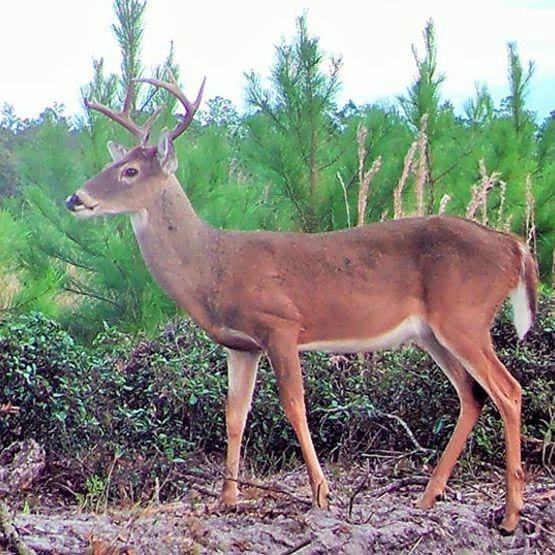
Eastern Gray Squirrel (Sciurus carolinensis)
Even if you do not get out into the forest and see bears, you will see squirrels, busily collecting their favorite foods, acorns and hickory nuts, getting ready for the winter. The Eastern Gray Squirrel is our backyard squirrel, and has adapted to feeding from bird feeders, if available. These are our friends, as their habit of burying nuts leads to forest regeneration. If you are quiet, you can hear them chattering to each other as they search, bury and eat mast.
As we enjoy the cooler weather and fall colors, this is a good time to go out and walk in the woods or along the dunes at one of our parks. Our animal friends are busy preparing for winter, eating lots of calories and putting on an extra layer of fat to keep them warm in the coming cold. This is a great time to explore nature and learn how animals prepare for the lean season to come. Remember to give them space and let them show you how their world works.

Helen Petre is a retired USDA biologist and college biology professor. She spends her time volunteering, teaching, and writing science articles to share her interests with future generations.


